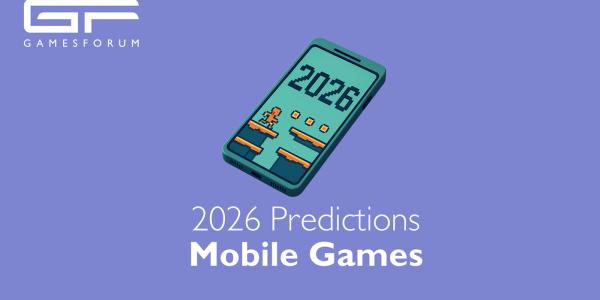Crafting Captivating Levels for Ad-Monetized Mobile Games: A Deep Dive into Game Design - Artem Saldaev


In this piece, Sunday's Artem Saldaev goes into how to craft Crafting Captivating Levels for Ad-Monetized Mobile Games
Written by Artem Saldaev, Content Writer at Sunday
Ever wondered what transforms a good game into a great one? Many would argue that it's the game's levels that truly define the experience. The challenges they present, the pacing they establish, and the progression they offer can either elevate or diminish a player's engagement. Join us as we delve into his insights on creating levels that captivate players right from the outset.
Mastering the Art of Onboarding and Mechanics Introduction
Effective onboarding is a cornerstone of mobile game level design, and it's a facet that cannot be overlooked. However, simplicity is key. The initial levels serve as a primer, introducing players to the core mechanics and objectives of the game in the clearest possible manner. Show them the goal, provide the controls to reach it, and avoid unnecessary distractions. By streamlining the mechanics and employing visual aids such as arrows or concise text instructions ("Tap here!"), players can grasp the basics intuitively, often without explicit guidance.

Following the introductory phase, the challenge lies in gradually enhancing players' skills without overwhelming them. Each level should incrementally introduce new mechanics while allowing users to master basic actions like taps and swipes. By taking measured steps, players can assimilate fresh gameplay elements without feeling inundated.
When introducing new mechanics mid-game, a similar approach should be adopted. Instead of relying on intrusive tutorial pop-ups, the level design itself should serve as the instructor. By dedicating a simple stage to the new mechanic, players can experiment and familiarize themselves with its nuances. Subsequent levels then integrate this mechanic with existing ones, facilitating a seamless learning curve. The key is to start with a focused approach and gradually layer additional mechanics over time, ensuring a smooth onboarding process throughout the game.
Striking the Balance Between Difficulty and Complexity
It’s important to emphasize on maintaining a delicate balance between difficulty and complexity throughout the game. By ensuring that the difficulty curve remains below the complexity curve, players can experience a sense of progression and accomplishment without feeling overwhelmed by overly challenging mechanics.

To achieve this balance, the focus should be on increasing visual complexity rather than ramping up difficulty. By introducing more enemies or obstacles without significantly elevating the level of challenge, players can derive satisfaction from overcoming increasingly chaotic scenarios. This approach fosters a feeling of accomplishment while keeping players engaged.
For those seeking a greater challenge, optional levels can be incorporated to cater to different player preferences. Whether through bonus levels, timely pop-up challenges, or daily quests, these additional stages provide an outlet for players craving more demanding gameplay without impeding the main progression.
Streamlining Level Design for Mass Production
While the hyper-casual genre may be evolving, the demand for short, engaging levels remains constant. To meet this demand, developers must create a diverse pool of levels to keep players entertained. When prototyping multiple levels simultaneously, the emphasis should be on uniqueness and progression.

Introducing new mechanics and obstacles every few levels is essential to keep gameplay fresh and exciting. By surprising players regularly, developers can sustain their curiosity and engagement throughout the game. To achieve this, levels should be carefully curated to ensure a smooth difficulty curve that complements the evolving complexity of the game.
Our approach begins with the creation of simple tutorial levels that gradually introduce core mechanics. As new elements are introduced, they are seamlessly integrated into the level progression, culminating in levels that combine all mechanics in various permutations. Experimentation and iteration are key components of this process, with designing and evaluating numerous levels to ensure they are both engaging and functional.
Empowering Level Designers with Efficient Tools
To expedite the level design process without sacrificing quality, robust level editing tools are indispensable. Custom level editors tailored to the game engine, such as Unity, enable designers to prototype and iterate levels quickly and precisely.
Automation plays a pivotal role in this process, automating repetitive tasks and allowing designers to focus on fine-tuning the level layout and polish. Features such as batch copying objects and swift playtesting facilitate a streamlined workflow, enabling designers to produce a high volume of engaging levels efficiently.
Iterative Playtesting for Refinement
Once levels are designed, extensive playtesting and iteration are essential to refine the gameplay experience. Internal testing is conducted initially, allowing designers to observe player behavior and identify potential pain points firsthand. Factors such as clarity, game flow, and difficulty curve are evaluated to ensure a smooth and engaging experience.
Subsequent KPI testing with a broader player base provides valuable insights into level completion rates, churn rates, and level length times. By analyzing this data, designers can identify problem areas and iterate on level design to optimize player engagement and retention.
Key Takeaways for Game Developers
In summary, crafting captivating levels for ad-monetized mobile games requires careful attention to detail and a focus on player engagement. Some key takeaways from our approach to level design include:
- Prioritize intuitive onboarding to familiarize players with core mechanics from the outset.
- Maintain a balance between difficulty and complexity to ensure a satisfying progression curve.
- Incorporate optional challenging levels to cater to different player preferences.
- Utilize automation and efficient level editing tools to streamline the design process.
- Conduct extensive playtesting and iteration to refine the gameplay experience based on real player feedback.
By incorporating these principles into their design process, developers can create mobile games that stand out in the competitive market landscape.
For more insights and tips on game-level design, stay tuned for future updates. At Sunday, we're committed to sharing our expertise with the mobile game development community and helping developers create successful and engaging games. Join us on this journey, and let's elevate the world of mobile gaming together!











